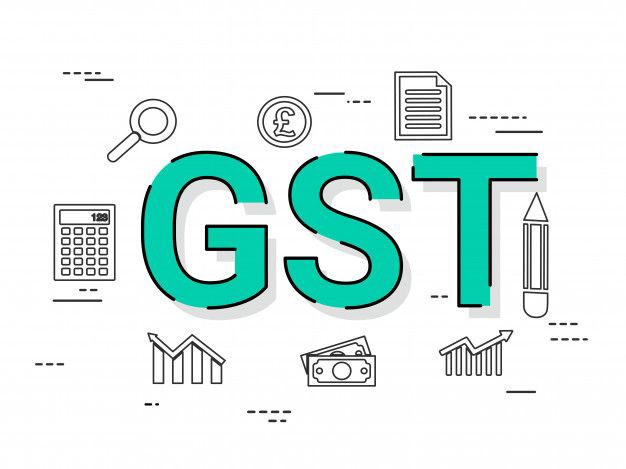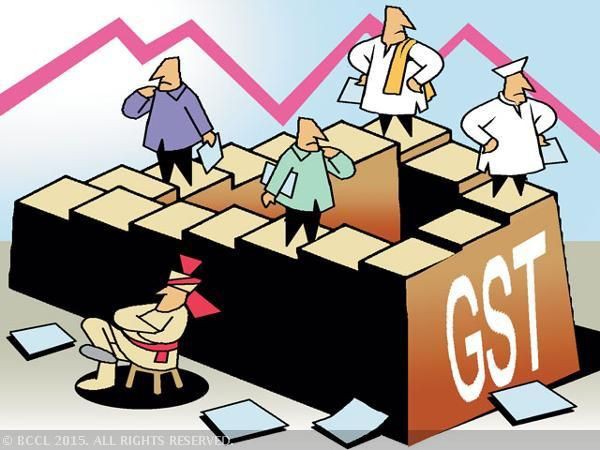The introduction of the Goods and Services Tax (GST) in India on July 1, 2017, marked a significant shift in the country’s taxation framework. This comprehensive tax reform aimed to simplify the complex tax structure, promote economic growth, and create a unified national market. Understanding the Impact of GST on Indian economy is crucial as it directly affects businesses, state revenues, and the overall economic landscape.

In this Post
ToggleWhat is GST?
GST, or Goods and Services Tax, is a comprehensive indirect tax levied on the supply of goods and services across India. It subsumes various central and state taxes such as excise duty, service tax, VAT, and more. The GST system is categorized into three components:Central GST (CGST): Levied by the Central Government on intra-state supplies.State GST (SGST): Levied by State Governments on intra-state supplies.Integrated GST (IGST): Levied on inter-state supplies and imports.The GST rates are structured into different slabs: 5%, 12%, 18%, and 28%, depending on the type of goods and services. This uniform tax system replaces the previously fragmented and multi-layered tax regime.
Impact of GST on India's GDP
The impact of GST on India’s GDP has been a subject of extensive debate among economists and policymakers. In the initial years following its implementation, the Indian economy experienced a mixed response. However, the long-term effects of GST on GDP have been more favorable.
Economic Growth
GST has streamlined the tax structure, reducing the cascading effect of multiple taxes. This has led to increased efficiency in the supply chain and lower production costs, ultimately contributing to economic growth. According to a report by the Ministry of Finance, the GDP growth rate showed a positive trend post-GST implementation, although the initial years saw some disruption.
Expert Views
Dr. Manmohan Singh, former Prime Minister of India, emphasized the long-term benefits of GST, stating that it would enhance the ease of doing business and contribute to GDP growth. Similarly, Raghuram Rajan, former Governor of the Reserve Bank of India, highlighted the potential of GST to bring about economic integration and boost investor confidence.
Case Studies
The manufacturing sector, in particular, has benefited from GST. Companies like Maruti Suzuki and Hindustan Unilever have reported increased production efficiency and cost savings due to the unified tax system. However, sectors like real estate and textiles faced initial challenges, which have gradually been mitigated.

Impact of GST on Business
The introduction of GST has had a profound impact on businesses across India, simplifying the taxation process and reducing the compliance burden.
Simplification of Taxation
GST has replaced a myriad of central and state taxes, creating a single, unified tax regime. This simplification has made it easier for businesses to comply with tax regulations, reducing administrative costs and enhancing the ease of doing business.
Compliance and Operational Costs
While GST has streamlined the tax process, it initially posed challenges for businesses in terms of compliance. The transition to the new system required significant changes in accounting and billing processes. However, over time, businesses have adapted to the new system, benefiting from reduced
Sectoral Analysis
The impact of GST varies across different sectors. The manufacturing sector has seen significant benefits due to reduced logistics and transportation costs. The services sector has also experienced growth, although some industries, like hospitality and real estate, faced challenges in the initial phase.
Case Studies
Small and medium enterprises (SMEs) initially struggled with the compliance burden but have gradually adapted to the new system. For example, a survey by the Confederation of Indian Industry (CII) showed that SMEs have reported increased efficiency and lower costs due to GST.

Impact of GST on State Revenue
The impact of GST on state revenue has been a contentious issue, with some states expressing concerns over revenue loss. However, the GST Council has implemented mechanisms to address these concerns.
Revenue Distribution
GST revenue is shared between the Centre and the States, with the Centre compensating states for any revenue loss due to GST implementation. This compensation mechanism has been crucial in addressing the concerns of states, ensuring a fair distribution of revenue.
State-wise Analysis
Some states, such as Maharashtra and Karnataka, have benefited from increased revenue due to GST. In contrast, states heavily reliant on indirect taxes, like Punjab and Haryana, faced initial revenue shortfalls. However, the compensation mechanism has helped mitigate these issues.
Expert Opinions
State finance ministers have expressed mixed views on GST’s impact. While some, like Kerala’s finance minister Thomas Isaac, have raised concerns about revenue loss, others, like Maharashtra’s finance minister Ajit Pawar, have highlighted the long-term benefits of GST for state finances.

Positive Impact of GST
.GST has brought about several positive changes in the Indian economy, promoting growth and efficiency.
Economic Integration
GST has created a unified national market by removing interstate tax barriers. This integration has facilitated smoother movement of goods and services across state borders, enhancing economic efficiency.
Tax Compliance and Transparency
The introduction of GST has led to increased tax compliance and transparency. The digitalization of tax processes has reduced tax evasion and improved revenue collection. According to the GST Council, tax compliance rates have significantly increased post-GST implementation.
Boost to Manufacturing and Export
GST has made Indian manufacturing more competitive by reducing production costs and logistics expenses. The removal of multiple taxes has streamlined the supply chain, boosting exports and enhancing India’s global trade position.
Enhanced Revenue for the Government
The broadening of the tax base under GST has resulted in increased revenue for the government. The GST Council reported a steady increase in GST collections, indicating a positive trend in revenue growth.
Negative Impact of GST
While GST has brought several benefits, it has also posed challenges and drawbacks.
Initial Implementation Challenges
The initial phase of GST implementation was marked by confusion and complexity. Businesses faced difficulties adapting to the new tax system, leading to compliance issues and operational disruptions.
Impact on Small Businesses
Small businesses and SMEs faced significant challenges in complying with GST regulations. The increased compliance burden and costs initially strained their financial resources. However, over time, many SMEs have adapted to the new system.
Inflationary Pressures
The introduction of GST led to short-term inflationary pressures, with prices of goods and services rising due to the new tax regime. However, these pressures have gradually stabilized over time.
Sector-specific Challenges
Certain sectors, such as real estate, textiles, and agriculture, faced specific challenges due to GST. The real estate sector experienced an increase in construction costs, while the textile industry struggled with compliance issues. The agricultural sector faced challenges in the initial phase, which have since been addressed.

Comprehensive Analysis of GST's Overall Impact
Balancing the positive and negative impacts of GST provides a comprehensive understanding of its effects on the Indian economy.
Summary of Benefits and Drawbacks
GST has simplified the tax structure, promoted economic growth, and enhanced tax compliance. However, it has also posed challenges, particularly for small businesses and specific sectors. The overall impact of GST on the Indian economy has been positive, with long-term benefits outweighing the initial challenges.
Public and Political Reactions
Public and political reactions to GST have been mixed. While some stakeholders appreciate the long-term benefits, others criticize the initial implementation challenges and its impact on specific sectors. The media has extensively covered the GST rollout, highlighting both its positive and negative aspects.
Future Prospects and Recommendations
Looking ahead, there are several potential reforms and adjustments that can further enhance the effectiveness of GST.
Potential Reforms
Simplifying the GST structure further, reducing the number of tax slabs, and addressing compliance issues can enhance the efficiency of the tax system. Continuous feedback from businesses and stakeholders can guide policy adjustments.
Long-term Economic Vision
In the long term, GST is expected to contribute significantly to India’s economic growth. By promoting a unified market, enhancing tax compliance, and boosting manufacturing and exports, GST will play a crucial role in achieving India’s economic milestones.

Conclusion
In conclusion, the impact of GST on the Indian economy has been multifaceted. While it has simplified the tax structure, promoted economic growth, and enhanced tax compliance, it has also posed challenges, particularly for small businesses and specific sectors. Understanding these impacts and addressing the challenges can further enhance the effectiveness of GST and contribute to India’s economic growth.
FAQs
What are the main objectives of GST?
The main objectives of GST are to simplify the tax structure, promote economic growth, and create a unified national market.
How has GST affected consumer prices?
GST initially led to short-term inflationary pressures, with prices of goods and services rising due to the new tax regime. However, these pressures have gradually stabilized over time.
What are the major criticisms of GST?
Major criticisms of GST include the initial implementation challenges, impact on small businesses, and inflationary pressures.
References
1.Ministry of Finance, Government of India [GST Revenue Reports]
2. Confederation of Indian Industry (CII):
– [CII Surveys and Reports]
3. World Bank:
– [World Bank Report on GST in India]
4. International Monetary Fund (IMF)
– [IMF Analysis on GST Implementation in India]
5. Economic Times:
– [Economic Times Articles on GST]

2 thoughts on “Impact of GST on Indian Economy: An In-Depth Analysis for 2024”